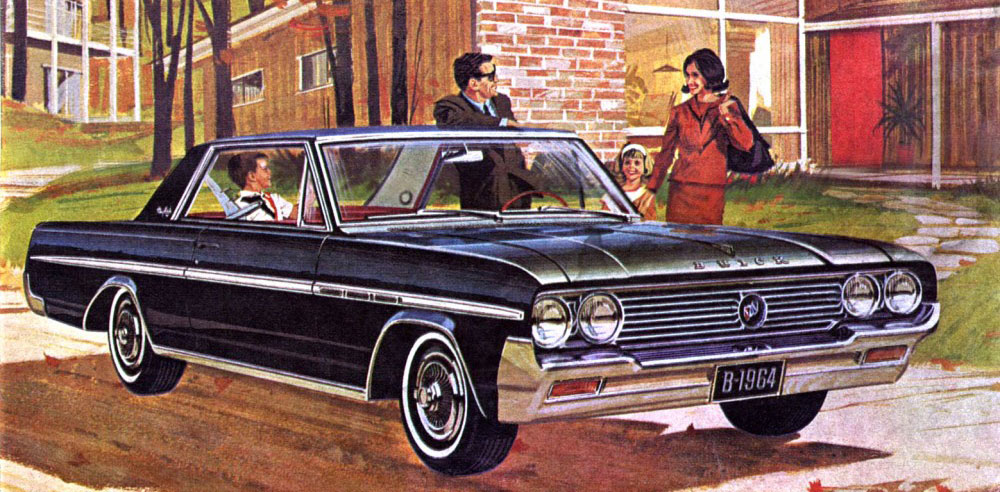

In American memory, the postwar 1950s have acquired an idyllic luster. Reruns of 1950s TV shows such as "Leave it to Beaver" and "Father Knows Best" leave today's viewers with an impression of unadulterated family bliss. The baby boomers look back nostalgically to these years that marked their early childhood experiences.
The president for many of these years was war hero Dwight Eisenhower. Ike, as he was nicknamed, walked a middle road between the two major parties. This strategy, called Modern Republicanism, simultaneously restrained Democrats from expanding the New Deal while stopping conservative Republicans from reversing popular programs such as Social Security. As a result, no major reform initiatives emerged from a decade many would describe as politically dead. Perhaps freedom from controversy was the prize most American voters were seeking after World War II and the Korean War.
A booming economy helped shape the blissful retrospective view of the 1950s. A rebuilding Europe was hungry for American goods, fueling the consumer-oriented sector of the American economy. Conveniences that had been toys for the upper classes such as fancy refrigerators, range-top ovens, convertible automobiles, and televisions became middle-class staples. The pent-up demand for consumer goods unleashed after the Great Depression and World War II sustained itself through the 1950s. Homes became affordable to many apartment dwellers for the first time. Consequently, the population of the SUBURBS exploded. The huge youth market had a music all of its own called rock and roll, complete with parent-detested icons such as Elvis Presley.
The 1950s opened with President Dwight Eisenhower's appointment of pro-civil rights advocate Earl Warren as Chief Justice of the United States Supreme Court, as well as a massive bus boycott in Baton Rouge, Louisiana, both in 1953. Why are these two issues important? Because the Warren Court became synonymous with the civil rights movement as you will see, and the bus boycott in Louisiana set the precedent for future non-violent protest while being the first bus boycott in civil rights history.
1954 marked a significant year for the civil rights movement. This was the year in which the Supreme Court ruled, via Brown vs. the Board of Education of Topeka, Kansas, 1954, that segregation in public facilities, in this case a public school, violated African Americans' constitutional right of equal protection under the law.
The Court encouraged states that enforced Jim Crow laws to begin integration at an 'all deliberate speed.' Unfortunately, at the time, the Court could only encourage segregationists to abide by the federal ruling, and states believed that an 'all deliberate speed' was left to interpretation.
Nineteen fifty-five was another pivotal year for the civil rights movement for two reasons. First, Rosa Parks challenged segregation on public transportation in Montgomery, Alabama when she refused to vacate her seat to a white rider. Parks was eventually arrested for her defiance, which touched off a major bus boycott. Eventually, in June 1956, the Supreme Court ruled in Browder v. Gale that bus segregation was unconstitutional under the equal protection clause of the Fourteenth Amendment.
Second, Martin Luther King Jr. gained national notoriety as a prominent voice and leader within the civil rights movement. This was largely attributed to his assistance in creating the Montgomery Improvement Association, which encouraged a massive bus boycott in Alabama following the rosa parks incident.
The paradoxical nature of the Fifties was evident in the cultural arena. The Eisenhower era was a time of both squeaky-clean Disneyland and unkempt, edgy beatniks. It was a time when the defiantly sexual Elvis competed with the insufferably bland Perry Como. Rebel Without a Cause, a film about teenagers fighting with switchblades and driving cars off cliffs, was a box-office hit; so too was The Ten Commandments, in which Moses parted the Red Sea and led the Israelites out of Egypt in a grand retelling of one of the Bible's most famous stories.
During the Fifties, mass culture began to dominate in the United States. This accounted for much of the blandness that critics lamented. Television network executives in particular wanted to cater to the largest audience possible, so they shaped their programs to offend the least number of viewers.
But mass culture also left room for diversity. If you didn't like Western movies, there were Biblical epics; if you didn't like comedies, there were quiz shows. The culture offered something for everybody. And if that something became popular, as rock n' roll certainly did, the engines of mass culture could make it huge.
But the popularity of mass forms of entertainment did not mean that they crowded out other types of culture. Recordings of classical music still sold well during the Fifties. Many theater companies, art museums and symphony orchestras survived, even though the exodus of urban dwellers to the suburbs shrank their audiences. Books sold well. And because of the G.I. Bill, which had paid for college for veterans, the country was increasingly well educated.